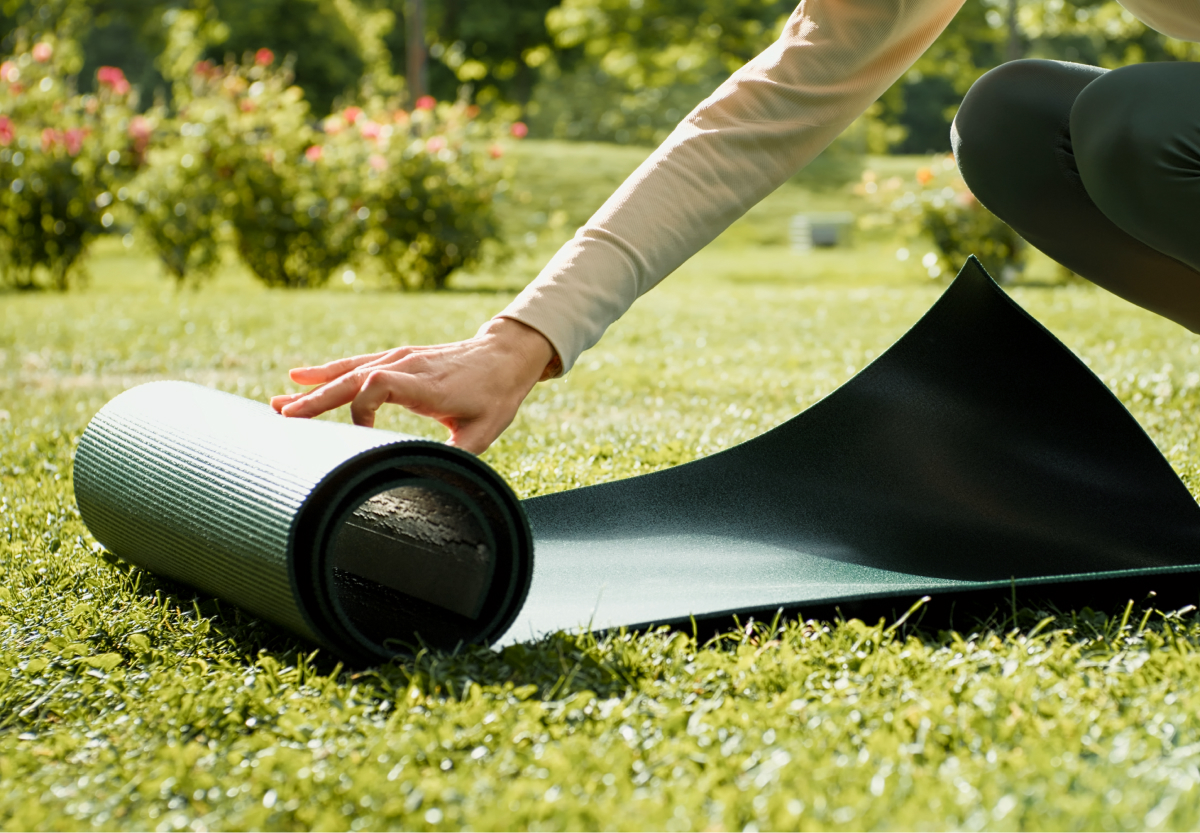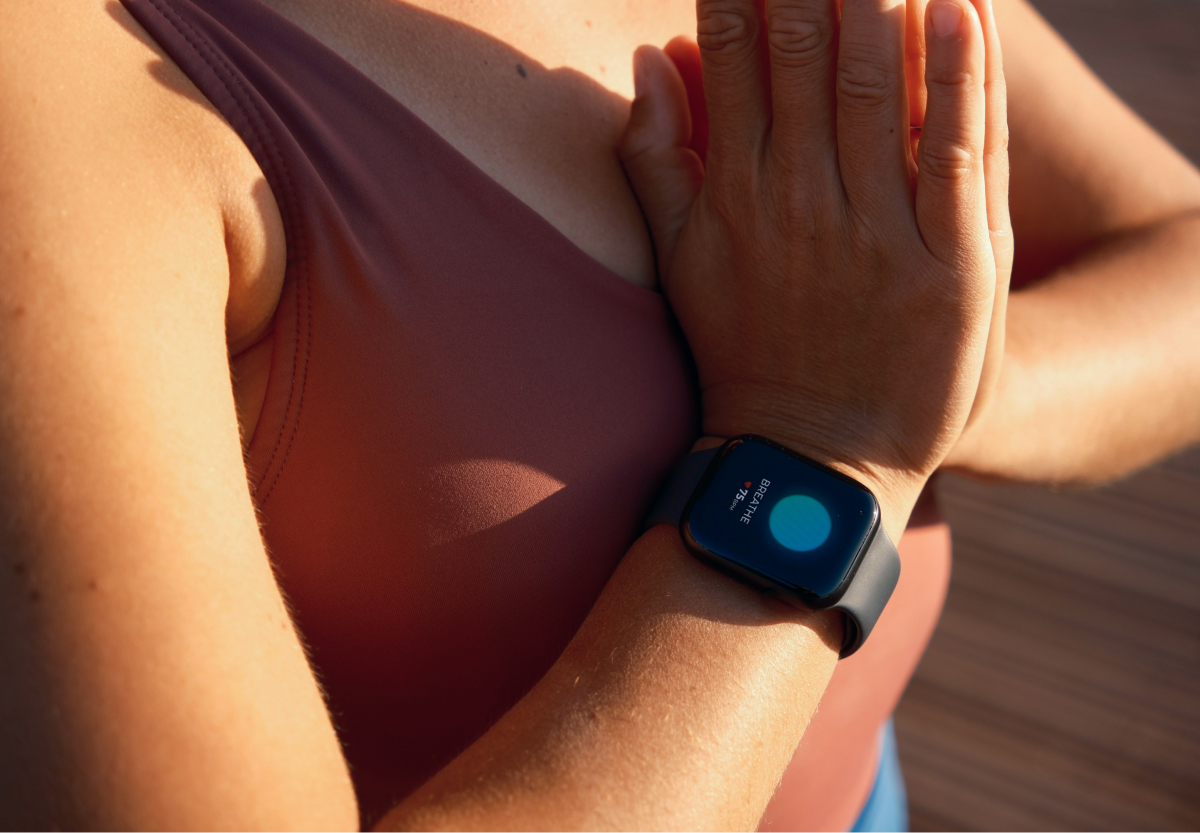Prediabetes and Exercise: Tailoring Your Workout for Optimal Glucose Control

Key Takeways
Prediabetes, which is characterized by higher-than-normal blood sugar levels that are not yet at diabetic levels, affects millions worldwide and is often a precursor to more serious metabolic disorders. It serves as a warning sign, indicating an increased risk of developing type 2 diabetes in the future if preventive measures aren’t taken.
Exercise is one of those preventative measures—it’s not just for optimal health or weight loss; it’s also been shown to help balance blood sugar levels and reduce the risk of progression to type 2 diabetes! Let’s explore the relationship between prediabetes and exercise and see how your workout routine can help manage your blood sugar.
What’s The Relationship Between Exercise and Prediabetes?
Physical activity is an umbrella term that encompasses a range of activities from low-intensity to high-intensity exercises. Regular physical activity plays a pivotal role in managing and preventing prediabetes. Exercise causes your muscles to increase their use of glucose without requiring as much insulin. This improved insulin sensitivity helps lower blood sugar levels, possibly reducing the risk of prediabetes progression. Research has shown that specific lifestyle changes, including exercise, can improve glucose control and significantly reduce the risk of progression to type 2 diabetes.
However, most Americans do not meet the CDC’s physical activity guidelines despite the clear benefits. This gap highlights the need for increased awareness and encouragement of regular exercise as part of a prediabetes management strategy.
Does Exercise Lower Blood Sugar and Increase Insulin Sensitivity?

As any healthcare professional will tell you, exercise is a great way to stay healthy regardless of your goals, whether for heart health, weight management, or mental health. And as we mentioned earlier, it has a profound impact on blood sugar regulation and insulin response, too. Regular exercise improves insulin sensitivity, allowing cells to more effectively absorb glucose from the bloodstream, which can lead to better overall blood sugar control.
A variety of exercise types should be a key component of prediabetes management. In this section, we’ll explore various types of exercise and their impact on blood sugar regulation and insulin response.
Aerobic Exercise
Aerobic exercise increases heart rate, uses large muscle groups, and primarily relies on oxygen to meet the body's energy demands. It’s crucial in improving cardiovascular health by strengthening the heart muscle, lung capacity, and circulation. These benefits contribute to a reduced risk of heart disease, lower blood pressure, and improved cholesterol levels.
Aerobic exercise helps lower blood sugar levels by increasing glucose uptake into muscles for energy during activity. Additionally, it allows cells to use insulin more effectively and reduces insulin resistance commonly seen in prediabetes.
Some practical aerobic exercises suitable for individuals with prediabetes include:
- Brisk walking
- Cycling
- Swimming
- Dancing
- Aerobic classes, like Zumba or cardio kickboxing
Anaerobic Exercise
Anaerobic exercise involves short bursts of intense physical activity that don’t rely on oxygen for energy production. Instead, it utilizes stored energy sources like glucose for fuel.
This type of exercise (for example, resistance training or strength training) has several benefits, including improved cardiovascular health, insulin sensitivity, and increased muscle mass, which plays a crucial role in metabolic health and preventing chronic diseases, especially as we age.
Some anaerobic exercises to incorporate into a prediabetes exercise plan include:
- Strength training
- HIIT workouts
- Bodyweight exercises
- Explosive movements, like sprints or plyometrics
Flexibility Training
Flexibility and stretching are important in improving blood circulation and may also help manage stress. These exercises focus on enhancing the range of motion in joints and muscles, promoting overall mobility, and reducing the risk of injuries.
Here are some tips for integrating flexibility training into your exercise routine:
- Incorporate stretching into your warm-up and cool-down routines.
- Dedicate specific days or sessions to focused flexibility training, such as yoga classes, Pilates, or dedicated stretching routines at home.
- Aim for various stretches that target major muscle groups, including the neck, shoulders, back, hips, legs, and arms.
- Listen to your body and avoid pushing into painful stretches.
When Is the Best Time to Exercise for Blood Sugar Control?

Did you know that timing your exercise may impact its benefits for blood sugar management?
Exercising after a meal, even light activity like walking, can help reduce post-meal blood sugar spikes. However, the intensity and duration required for measurable effects may vary for each individual.
Morning exercise can help manage the dawn phenomenon (a spontaneous rise in blood sugar levels upon waking). Engaging in physical activity in the morning may help counteract this and improve insulin sensitivity throughout the day. “Remember, people may respond differently, so monitoring your response is key! If your exercise is more intense, even in the morning, we can see a rise in blood sugar. However, overall, and throughout the day, we should generally see decreases in BG levels,” explains glucose-certified expert Amanda Donahue, MS, RD, CD.
Fitting Exercise Into a Busy Schedule
Incorporating regular physical activity into a hectic lifestyle takes some strategic planning and commitment. Here are some tips to help you stay active despite a busy schedule:
- Prioritize consistency
- Schedule workouts
- Incorporate activity into daily tasks
- Find activities you enjoy
Amanda adds another tip for those too busy to fit in a single workout: break up exercise into short durations, more often throughout the day. Try, for example, brisk, 10-minute walks three times daily, which would be 30 minutes of walking overall.
5 Exercises for Prediabetes
In this section, we’ll recommend five of the best exercises for those seeking to manage or reverse prediabetes. Of course, remember that all forms of exercise significantly benefit blood sugar control and overall well-being. The key is to find activities that you enjoy and can consistently incorporate into your routine.
Walking
Walking is an excellent, low-impact exercise that can effectively improve blood sugar levels, making it ideal for individuals managing prediabetes. For beginners, starting with a daily 30-minute brisk walk at a moderate intensity is a great way to begin reaping the benefits. Gradually increase the duration or intensity as your fitness level increases.
Walking after meals has an especially positive impact on blood sugar regulation. A 30-minute walk after a meal has been shown to help lower postprandial blood sugar spikes.
Cycling
Cycling offers numerous benefits for cardiovascular health and blood sugar regulation. It is a low-impact exercise tailored to different fitness levels, making it suitable for individuals managing prediabetes. It also positively affects blood sugar for over 24 hours after exercising.
To start a cycling routine, aim for at least three to five days of cycling per week, each lasting 30 minutes to an hour. Beginners can start with a comfortable pace and gradually increase intensity and duration as they build stamina.
Swimming
Swimming is a full-body exercise that is particularly beneficial for older adults, people with joint concerns, and those seeking low-impact workout options. Aim for at least two to three weekly swimming sessions to reap the cardiovascular and muscular benefits.
Mix up your swimming routine by including different strokes such as freestyle, backstroke, breaststroke, and butterfly. Each stroke engages various muscle groups, providing a comprehensive full-body workout.
Resistance Training
Resistance training plays a crucial role in building muscle mass, improving glucose and metabolic health, and enhancing overall physical function. It involves working against resistance, such as weights, resistance bands, or body weight, to strengthen muscles and bones.
Basic resistance exercises that can be done at home or in a gym include:
- Bodyweight exercises
- Dumbbell exercises
- Kettlebell exercises
- Machine exercises
Yoga
Yoga offers a holistic approach to health, providing benefits for stress reduction, flexibility, and blood sugar control. Some beginner-friendly yoga practices include:
- Gentle yoga
- Hatha yoga
- Chair yoga
What Are the Best Methods for Tracking Fitness Progress?

Tracking your fitness progress is a great way to stay motivated and meet your fitness goals. From traditional methods like tracking workouts to modern digital tools, here are some effective ways to track and assess your progress on your fitness journey.
Using a Fitness Tracker for Activity and Sleep Monitoring
Fitness trackers can provide valuable insights into your daily activity levels, including steps taken, distance traveled, calories burned, and active minutes. When choosing a fitness tracker, be sure to consider the following features:
- Heart Rate and Monitoring: Look for a fitness tracker with accurate heart rate monitoring capabilities.
- Heart Rate Variability (HRV): Some advanced fitness trackers measure HRV, which is the variation in time between each heartbeat.
- Sleep Tracking: Opt for a fitness tracker with reliable features, including sleep stages (deep, light, and REM sleep), sleep duration, and sleep quality metrics.
- Sync Compatibility: Choose a fitness tracker that can sync data with compatible apps or platforms. Syncing wearable data with apps like Nutrisense can allow you to review the impact of activity levels, sleep quality, and other lifestyle factors on glucose levels, providing valuable insights for managing blood sugar levels.
It's important to note that while fitness trackers can be valuable tools for monitoring progress and staying motivated, they may have a degree of error in measurements.
Keeping an Exercise Diary
Maintaining an exercise diary is a powerful tool for tracking progress, setting goals, and staying motivated on your fitness journey. For comprehensive tracking, be sure to include:
- The date and time of each exercise session
- The type of exercise or activity you performed
- The duration of your workout and the intensity level
- How you felt before, during, and after exercise
Measuring Changes in Blood Sugar Levels
Monitoring blood sugar levels before and after exercise is important for anyone managing prediabetes or diabetes. Continuous Glucose Monitors (CGM) are tools that offer real-time feedback on how lifestyle factors, including exercise, impact blood sugar levels.
This information can help you make timely adjustments to your exercise routines as needed. CGMs provide real-time feedback on how lifestyle factors, including exercise, impact glucose levels. When combined with professional support, such as guidance from a registered dietitian, they can be powerful tools for accountability and informed decision-making.
Find the right Nutrisense programto turn insight into progress.
How to Create Your Prediabetes Exercise Program

Here are some tips from Nutrisense’s glucose-expert team of nutritionists and dietitians to help you create an exercise plan that aligns with your goals:
Set Realistic Goals
Setting realistic fitness goals is crucial for success. Achievable goals provide a sense of accomplishment and motivation as you see progress. Realistic goals are also easier to maintain in the long term, promoting consistent exercise habits.
When setting goals, try using the SMART criteria:
- Specific
- Measurable
- Achievable
- Relevant
- Time-Bound
Incorporate a Variety of Exercises
Instead of just one type, aim for a mix of weekly aerobic, strength, and flexibility exercises to ensure a well-rounded workout routine.
Remember, there's no one-size-fits-all approach to exercise. Stay curious, experiment with different types of exercises, and find what works best for you regarding enjoyment, effectiveness, and sustainability.
Focus on Gradual Intensity & Duration Adjustments
Safely increasing the intensity and duration of workouts over time is essential to avoid overexertion and injuries.
Begin with a comfortable intensity and duration that matches your current fitness level. Increase intensity, duration, or frequency gradually to allow your body time to adapt and build strength and endurance.
Monitor Your Blood Sugar Before and After Workouts
Checking blood glucose levels before, during, and after exercise can help you understand how different exercises impact blood sugar levels. Consult a healthcare professional, such as a registered dietitian, for personalized guidance on using glucose monitoring to tailor your exercise plan.
Complementing Exercise with Nutrition and Lifestyle Changes

Achieving your health goals requires a holistic approach that goes beyond exercise alone. Combine regular exercise with proper nutrition and lifestyle habits for a well-rounded prediabetes plan.
Balancing Macronutrients
A diet rich in fiber, healthy fats, and proteins plays an important role in blood sugar control. Fiber slows digestion and absorption of carbohydrates, while healthy fats and lean proteins can improve insulin sensitivity. Amanda adds, “Timing carb intake around exercise can help improve overall carb tolerance and help fuel workouts so we feel energized throughout the session."
Consulting with a nutritionist or registered dietitian can provide personalized guidance and support in developing a nutrition plan tailored to your individual macronutrient needs and goals.
Staying Hydrated
Hydration plays a critical role in physical performance, metabolic regulation, and overall health, so ensure you are hydrating adequately before, during, and after exercise. Adjust your fluid and electrolyte intake based on activity level, environmental conditions, and your individual needs.
Sleeping and Recovering
Sleep has a major impact on both insulin sensitivity and exercise performance. Here are some tips to ensure you’re getting enough sleep:
- Establish a consistent sleep schedule
- Create a relaxing bedtime routine
- Limit screen time
- Practice stress management
Manage Conditions Like Prediabetes with Nutrisense
Ready to take control of your health and make meaningful changes to prevent prediabetes from progressing? Nutrisense’s expert registered dietitians and nutritionists are here to help you tailor your exercise, nutrition, and lifestyle choices for optimal glucose control.
Whether you're just getting started or looking to fine-tune your routine, our personalized support can guide you every step of the way. Book a video call today, or pick from various Nutrisense solutions from a suite of services to uncover deeper insights and make informed decisions for a healthier future.
Go Beyond Glucose Data with Nutrisense
Your glucose can significantly impact how your body feels and functions. That’s why stable levels are an important factor in supporting overall wellbeing. But viewing glucose isn't enough. Nutrisense, you’ll be able to learn how to use your body's data to make informed lifestyle choices that support healthy living.
One-to-one coaching
Sign up to access insurance-covered video calls to work with a glucose expert: a personal registered dietitian or certified nutritionist who will help tailor your lifestyle and diet to your goals.
Monitor and measure what matters
With the Nutrisense CGM Program, you can monitor your glucose with health tech like glucose biosensors and continuous glucose monitor (CGM)s, and analyze the trends over time with the Nutrisense App. This will help you make the most informed choices about the foods you consume and their impact on your health.
Find your best fit
Ready to take the first step? Start with our quiz to find the right Nutrisense program to help you take control.

Amanda is a Nutrition Manager and Registered Dietitian, with a Masters in Dietetics from Stephen F. Austin State University. Originally from south GA, she got her undergrad degree from Texas Tech University. She worked at a hospital in Fort Worth, TX, for 4 years as a dietitian, counseling those living with HIV.




